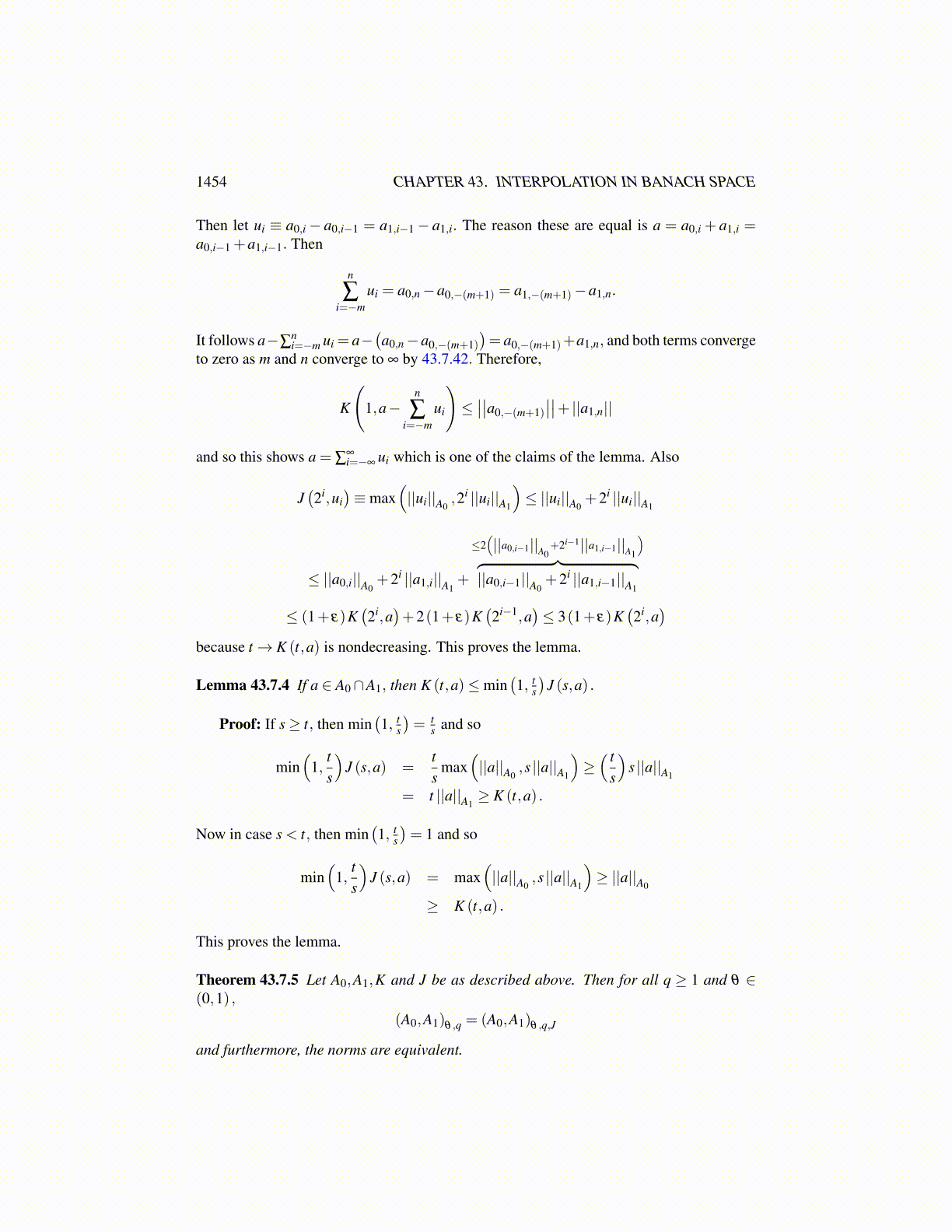
1454 CHAPTER 43. INTERPOLATION IN BANACH SPACE
this is short for J (t,a,A0,A1). Thus
J (t,a,A1,A0)≡max(||a||A1
, t ||a||A0
)but unless indicated otherwise, A0 will come first. Now for θ ∈ (0,1) and q ≥ 1, define aspace, (A0,A1)θ ,q,J as follows. The space, (A0,A1)θ ,q,J will consist of those elements, a, ofA0 +A1 which can be written in the form
a =∫
∞
0u(t)
dtt≡ lim
ε→0+
∫ 1
ε
u(t)dtt+ lim
r→∞
∫ r
1u(t)
dtt
(43.7.36)
the limits taking place in A0 +A1 with the norm
K (1,a)≡ infa=a0+a1
(||a0||A0
+ ||a1||A1
),
where u(t) is strongly measurable with values in A0 ∩A1 and bounded on every compactsubset of (0,∞) such that(∫
∞
0
(t−θ J (t,u(t) ,A0,A1)
)q dtt
)1/q
< ∞. (43.7.37)
For such a ∈ A0 +A1, define
||a||θ ,q,J ≡ inf
u
{(∫∞
0
(t−θ J (t,u(t) ,A0,A1)
)q dtt
)1/q}
(43.7.38)
where the infimum is taken over all u satisfying 43.7.36 and 43.7.37.
Note that a norm on A0×A1 would be
||(a0,a1)|| ≡max(||a0||A0
, t ||a1||A1
)and so J (t, ·) is the restriction of this norm to the subspace of A0×A1 defined by
{(a,a) : a ∈ A0∩A1}
Also for each t > 0 J (t, ·) is a norm on A0 ∩A1 and furthermore, any two of these normsare equivalent. In fact, for 0 < t < s,
J (t,a) = max(||a||A0
, t ||a||A1
)≥ max
(||a||A0
,s ||a||A1
)= J (s,a)
≥ max( s
t||a||A0
,s ||a||A1
)=
st
max(||a||A0
, t ||a||A1
)≥ s
tJ (t,a) .
The following lemma is significant and follows immediately from the above definition.